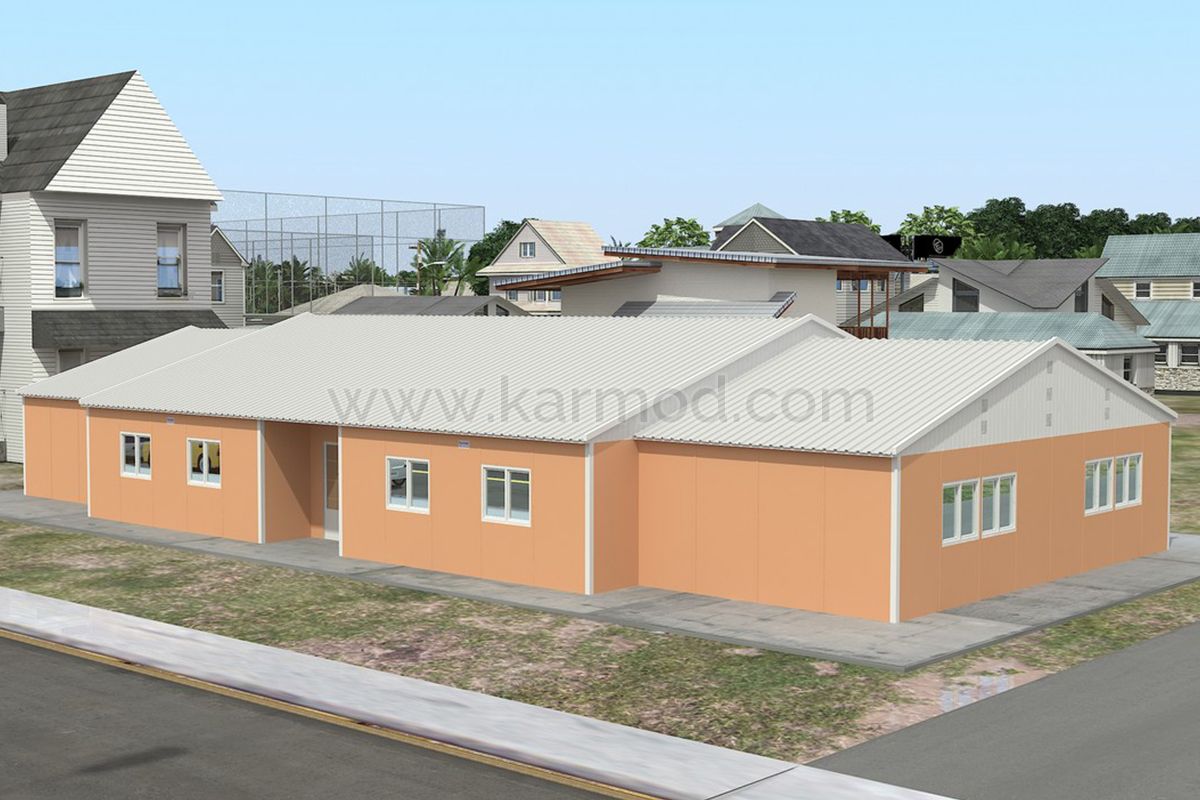
Redefining Modern Prefab Homes
Modern prefab homes are no longer the plain, box-shaped structures many people remember from decades ago. Advances in modular home design and construction technology have transformed prefab buildings into high-performing, visually appealing spaces that rival conventional architecture.
ChatGPT said:
Prefab construction has become an intelligent choice for large-scale housing projects that demand both speed and durability.
The Evolution of Prefab Design
Earlier prefab units focused mainly on speed and affordability. Modern prefab homes, however, bring design and comfort to the forefront. Architects now integrate container aesthetics and modular systems to create spaces that reflect modern design standards.
These buildings use high-quality finishes, clean lines, and adaptable floor plans. They combine steel, wood, and glass in ways that match the best of traditional buildings without the waste, cost, or long construction timelines.
The result: sustainable, functional, and beautiful structures that meet both private and public sector expectations.
How Modular Home Design Enhances Aesthetics
Modular home design allows architects to plan and build in sections, known as modules. These modules are fabricated in controlled factory environments, ensuring precision and consistency. Once transported to site, they are assembled with minimal disruption.
Each module can be customized to match project requirements. Developers can specify façade materials, window sizes, interior layouts, and even energy-efficient features. This flexibility enables large housing or institutional projects to maintain a consistent aesthetic identity while meeting individual site conditions.
By adopting modular home design, developers can achieve both uniformity and variety, qualities often seen as opposites in traditional construction.
Container Aesthetics and Urban Innovation
Container aesthetics have become a defining feature of modern prefab homes. Designers now use the clean, industrial look of steel containers to project simplicity and innovation. These designs appeal to both private buyers and institutional investors who value minimalist architecture and long-term structural strength.
From housing estates to office complexes, container-inspired prefab projects demonstrate how beauty and function can coexist. Durable steel frames, weather-resistant coatings, and modern finishes give these homes a strong presence in both urban and rural settings.
In many regions, prefab container buildings now meet international safety and energy-efficiency standards. The International Code Council (ICC) provides guidelines that ensure prefab buildings meet the same performance criteria as traditional structures.
Why Developers and Governments Are Choosing Prefab
For both developers and public institutions, the advantages of prefab construction extend well beyond speed and cost. Prefab technology combines efficiency, quality control, and scalability; three essentials for large-scale housing and infrastructure delivery.
1. Consistent Quality Across Projects
Prefab construction takes place in controlled environments, allowing every module to meet the same design and performance standards. This eliminates on-site variability, reduces errors, and ensures predictable timelines. Each unit leaves the factory with built-in precision, minimizing the need for rework once it arrives on-site.
2. Reduced Waste and Improved Efficiency
Unlike traditional construction, which generates significant waste and delays, prefab systems use materials efficiently. Off-site production cuts down on waste, reduces storage needs, and keeps job sites cleaner and safer. Developers benefit from reduced material costs and faster project turnover.
3. Faster Delivery for Public Projects
Governments aiming to meet housing and infrastructure goals use prefab systems for quick deployment. Schools, hospitals, and housing estates can be completed in a fraction of the time required for conventional builds. Prefab construction also simplifies logistics by reducing heavy material transport and on-site congestion.
4. Transparency and Cost Control
Prefab provides measurable data on every stage of production and installation. This makes it easier to track spending, verify quality, and meet audit requirements. For government-funded projects, this level of transparency improves accountability and ensures budgets are used efficiently.
5. Modern Aesthetics and User Comfort
Today’s prefab buildings are not just functional, they’re designed for comfort and appeal. Modern prefab homes feature clean lines, natural light, and flexible layouts that meet international safety and energy standards. These qualities make them suitable for residential estates, office complexes, and institutional buildings.
6. Long-Term Value for Investors and Policymakers
Prefab construction supports sustainable development by reducing environmental impact and extending building lifespan. With proper maintenance, these structures retain their strength and aesthetic appeal for decades. Developers and governments see long-term returns in lower maintenance costs and higher user satisfaction.
Modern prefab homes now represent a forward-thinking approach to construction, one that delivers reliability, efficiency, and design excellence at scale.
See our comparison between prefab and traditional construction housing for deeper insight
Modern Prefab Homes and Long-Term Value
Aesthetics play a direct role in real estate value. Buyers and tenants respond to spaces that look professional, clean, and well-designed. Modern prefab homes deliver this value through form, material, and flexibility.
Because modules can be relocated or reconfigured, developers can adapt existing structures for new uses without starting over. This adaptability helps maximize investment and extend a project’s lifespan.
Prefab also supports sustainability goals. Efficient energy systems, water recycling features, and renewable material use make prefab a cornerstone of responsible development. These are not optional extras but core features of modern prefab architecture.
The Future of Prefab Design in Africa
Across Africa, the demand for modern prefab homes is growing as governments and private investors look for scalable, efficient housing solutions. Prefab technology bridges the gap between affordability and quality.
As urban populations rise, modular systems will continue to define how cities expand. Prefab construction aligns with smart urban planning, offering flexibility in layout, quick deployment, and low environmental impact.
At Karmod Nigéria, we believe modern prefab homes should look as good as they perform. Every project we deliver combines strength, comfort, and contemporary design that meets global standards.
If your organization is planning a large-scale housing or public infrastructure project, our team can help you design and build prefab solutions that match your vision and budget.
Visit www.karmod.com.ng to explore our modular designs and start your next project with confidence.
